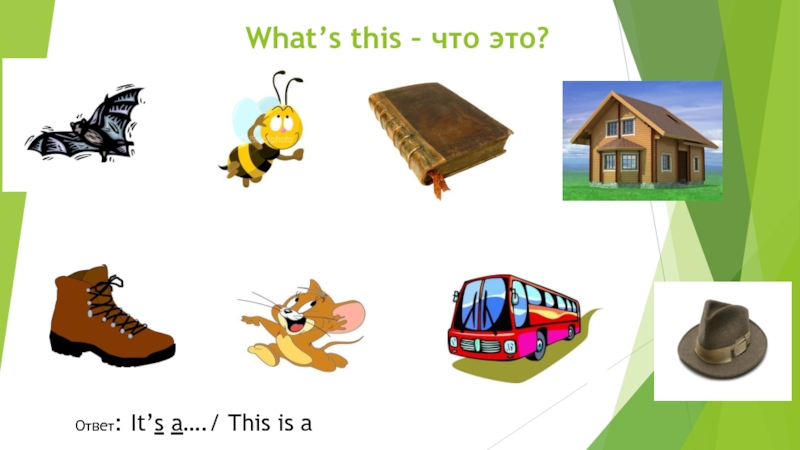- Главная
- Разное
- Образование
- Спорт
- Естествознание
- Природоведение
- Религиоведение
- Французский язык
- Черчение
- Английский язык
- Астрономия
- Алгебра
- Биология
- География
- Геометрия
- Детские презентации
- Информатика
- История
- Литература
- Математика
- Музыка
- МХК
- Немецкий язык
- ОБЖ
- Обществознание
- Окружающий мир
- Педагогика
- Русский язык
- Технология
- Физика
- Философия
- Химия
- Шаблоны, фоны, картинки для презентаций
- Экология
- Экономика
Презентация, доклад по английскому языку на тему Американский доллар. История и современность
Содержание
- 1. Презентация по английскому языку на тему Американский доллар. История и современность
- 2. The currency of the United States can
- 3. 1775 - American colonists issued paper currency
- 4. 1781 - To support the Revolutionary War,
- 5. 1791 - After adoption of the Constitution
- 6. 1861 - On
- 7. 1877 - The Department of the Treasury's
- 8. 1913 - After the financial panics of
- 9. 1929 - Currency was reduced in size
- 10. 1990 - A security thread and microprinting
- 11. 1990 - A
- 12. Larger bills ($50, $100) can last in
- 13. On the $1 bill the Latin above
- 14. If you had $10 billion and spent
- 15. The number 13 (corresponding to the 13
- 16. Why is a dollar called a buck?
- 17. Why are US notes green? No one
- 18. The origin of the dollar sign –
The currency of the United States can be traced back to 1690 before the birth of the country when the region was still a patchwork of colonies. The Massachusetts Bay Colony used paper notes to finance
Слайд 2
The currency of the United States can be traced back to
1690 before the birth of the country when the region was still a patchwork of colonies. The Massachusetts Bay Colony used paper notes to finance military expeditions. After the introduction of paper currency in Massachusetts, the other colonies quickly followed.
Слайд 3
1775 - American colonists issued paper currency for the Continental Congress
to finance the Revolutionary War. The notes were backed by the "anticipation" of tax revenues. Without solid backing and easily counterfeited, the notes quickly became devalued, giving rise to the phrase "not worth a continental."
Слайд 4
1781 - To support the Revolutionary War, the Continental Congress chartered
the Bank of North America in Philadelphia as the nation's first "real" bank.
Слайд 5
1791 - After adoption of the Constitution in 1789, Congress chartered
the first Bank of the United States until 1811 and authorized it to issue paper bank notes to eliminate confusion and simplify trade. The bank served as the U.S. Treasury's fiscal agent, thus performing the first central bank functions.
Слайд 6 1861 - On the brink of bankruptcy
and pressed to finance the Civil War, Congress authorized the United States Treasury to issue paper money for the first time in the form of non-interest bearing Treasury Notes call Demand Notes.
Слайд 71877 - The Department of the Treasury's Bureau of Engraving and
Printing started printing all U.S. currency.
Слайд 8
1913 - After the financial panics of 1893 and 1907, the
Federal Reserve Act of 1913 was passed. It created the Federal Reserve System as the nation's central bank to regulate the flow of money and credit for economic stability and growth. The system was authorized to issue Federal Reserve Notes, now the only U.S. currency produced.
Слайд 91929 - Currency was reduced in size by twenty-five percent and
standardized with uniform portraits on the faces and emblems and monuments on the backs.
Слайд 10
1990 - A security thread and microprinting were introduced in $50
and $100 notes to deter counterfeiting by technologically advanced copiers and printers.
Слайд 11 1990 - A security thread and microprinting were introduced in $50
and $100 notes to deter counterfeiting by technologically advanced copiers and printers.
Слайд 12
Larger bills ($50, $100) can last in circulation up to 8
years
The average life of a dollar bill is just 18 months
The number 172 can be seen on the back of the U.S. $5 dollar bill in the bushes at the base of the Lincoln Memorial
$20 bills last in circulation for approximately 2 years
$5 bills last in circulation for around 15 months
The average life of a dollar bill is just 18 months
The number 172 can be seen on the back of the U.S. $5 dollar bill in the bushes at the base of the Lincoln Memorial
$20 bills last in circulation for approximately 2 years
$5 bills last in circulation for around 15 months
Слайд 13
On the $1 bill the Latin above the pyramid, ANNUIT COEPTIS,
means "God has favored our undertaking”
The Latin below the pyramid on the $1 bill, NOVUS ORDO SECLORUM, means "a new order for the ages”
At the base of the pyramid on the $1 bill you will find “1776” in Roman Numerals
On the $1 bill, you can see an owl in the upper left-hand corner of the "1" encased in the "shield," while a spider is hidden in the front upper right-hand corner
On the new $100 bill, the clock tower of Independence Hall in Philadelphia is shown with the time set at 4:10. According to the US Bureau of Engraving and Printing, “there are no records explaining why that particular time was chosen”
The Latin below the pyramid on the $1 bill, NOVUS ORDO SECLORUM, means "a new order for the ages”
At the base of the pyramid on the $1 bill you will find “1776” in Roman Numerals
On the $1 bill, you can see an owl in the upper left-hand corner of the "1" encased in the "shield," while a spider is hidden in the front upper right-hand corner
On the new $100 bill, the clock tower of Independence Hall in Philadelphia is shown with the time set at 4:10. According to the US Bureau of Engraving and Printing, “there are no records explaining why that particular time was chosen”
Слайд 14
If you had $10 billion and spent $1 every second of
every day, it would take 317 years for you to go broke
In 1963, the $2 bill and the Federal Reserve Note were changed by adding the motto “IN GOD WE TRUST” to the reverse and removing “WILL PAY TO THE BEARER ON DEMAND” from the front. Also, the obligation on the Federal Reserve Note was changed to its current wording: “THIS NOTE IS LEGAL TENDER FOR ALL DEBTS PUBLIC AND PRIVATE”
In 1963, the $2 bill and the Federal Reserve Note were changed by adding the motto “IN GOD WE TRUST” to the reverse and removing “WILL PAY TO THE BEARER ON DEMAND” from the front. Also, the obligation on the Federal Reserve Note was changed to its current wording: “THIS NOTE IS LEGAL TENDER FOR ALL DEBTS PUBLIC AND PRIVATE”
Слайд 15
The number 13 (corresponding to the 13 colonies) figures prominently on
the $1 bill.
The number of letters/digits in 1776 and its Roman Numeral equivalent MDCCLXXVI (9) adds up to 13
The dollar has 13 stars above the eagle
There are 13 steps on the Pyramid
There are 13 letters in ANNUIT COEPTIS E PLURIBUS UNUM contains 13 letters
There are 13 vertical bars on the shield
The top of the shield has 13 horizontal stripes
You can count 13 leaves on the olive branch
There are 13 berries on the olive branch
The dollar bill also features 13 arrows and 13 hats
The number of letters/digits in 1776 and its Roman Numeral equivalent MDCCLXXVI (9) adds up to 13
The dollar has 13 stars above the eagle
There are 13 steps on the Pyramid
There are 13 letters in ANNUIT COEPTIS E PLURIBUS UNUM contains 13 letters
There are 13 vertical bars on the shield
The top of the shield has 13 horizontal stripes
You can count 13 leaves on the olive branch
There are 13 berries on the olive branch
The dollar bill also features 13 arrows and 13 hats
Слайд 16
Why is a dollar called a buck? Before the days of
paper money, Americans traded animal skins, including deer and elk bucks, for goods and services. Hence the word “buck” to describe money.
Слайд 17
Why are US notes green? No one is really sure. However,
in 1929, when the Bureau of Engraving and Printing began making smaller size currency, green was continued because pigment of that color was readily available in large quantities. The color is relatively high in its resistance to chemical and physical changes, and green has now been psychologically identified with the strong and stable credit of the US government.
Слайд 18
The origin of the dollar sign – $ – has various
explanations. The most widely accepted is that it is the result of the evolution of the Mexican or Spanish “PS” symbol for pesos. This theory, derived from a study of old manuscripts, explains that the S gradually came to be written over the P, developing a close equivalent to the $ mark. It was widely used even before the adoption of the United States Dollar in 1785.























